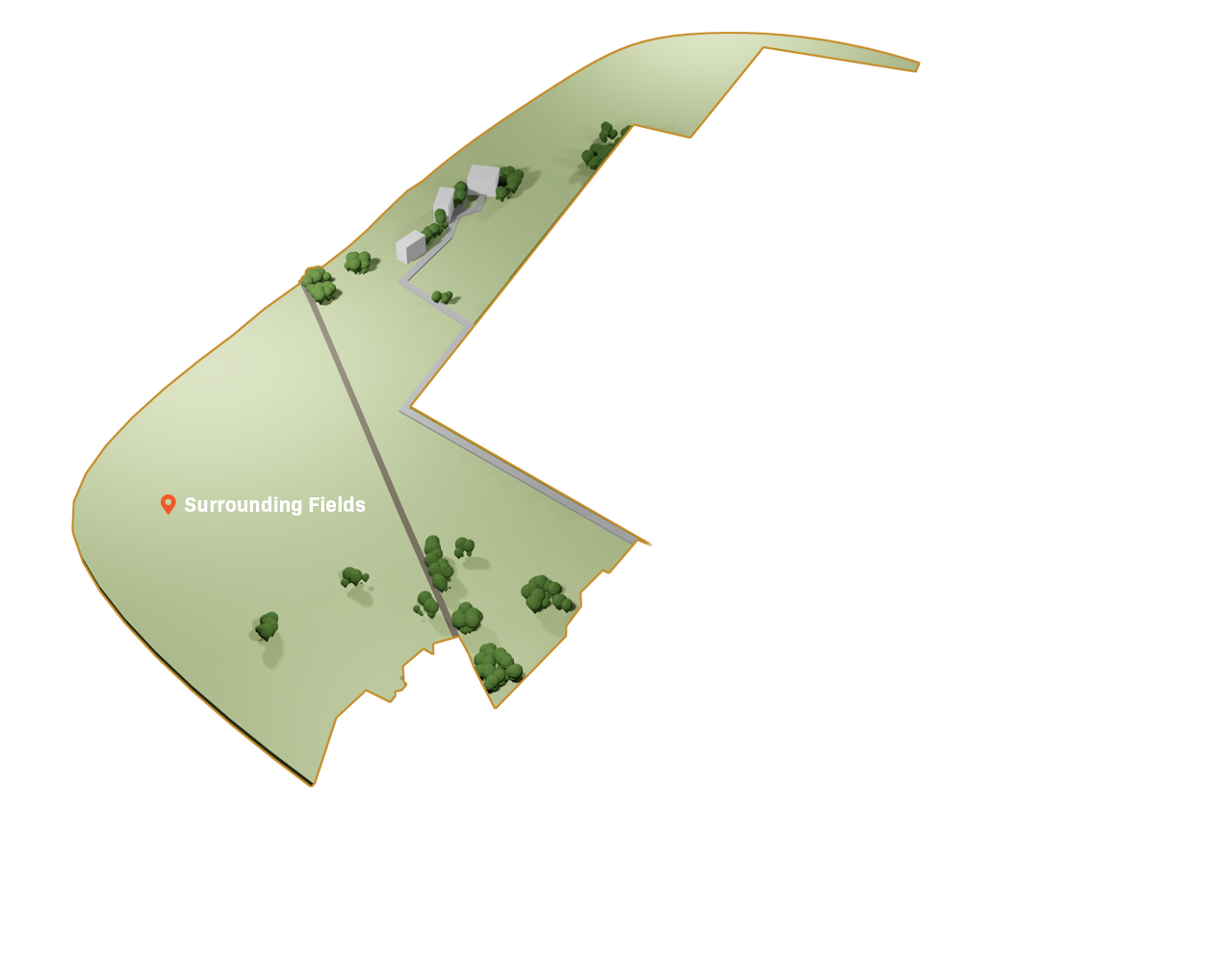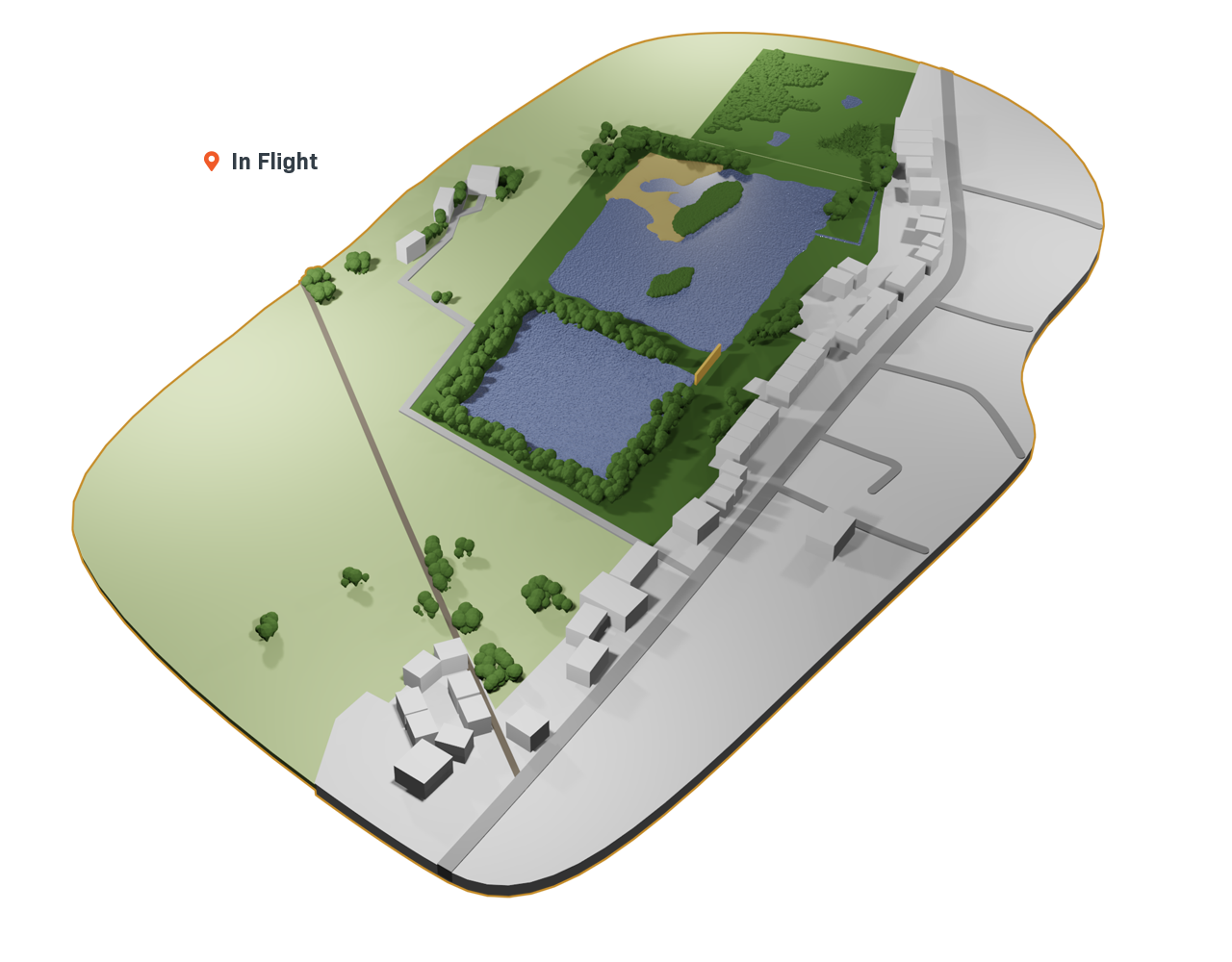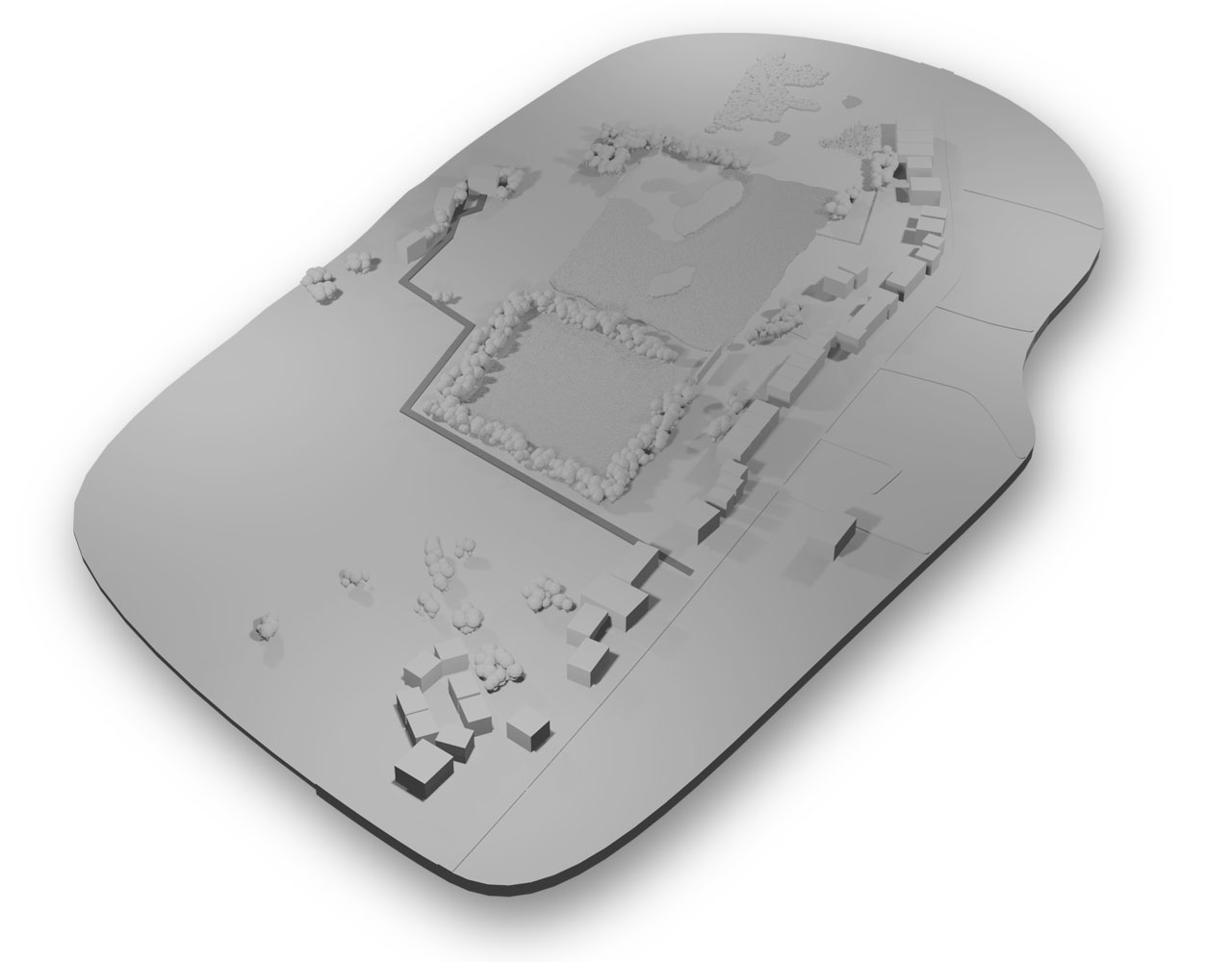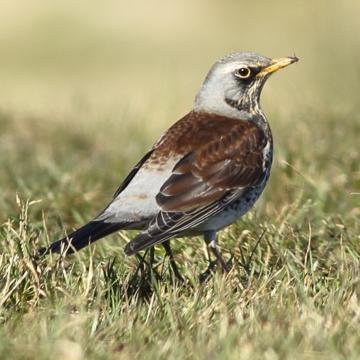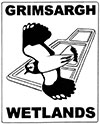(Turdus pilaris)
Occasional
Summary
A large member of the thrush family, the fieldfare is often spotted on the wetlands, quite often in mixed flocks with redwing. It can also be seen more generally in flocks of anything from a handful to many hundreds of birds.
Their appetite for fruit and berries means that they are best looked for in the hedgerows around the wetlands, and once the berries are eaten, they will look for worms in the surrounding fields.
If youre lucky, you may catch sight of a fieldfare in your garden in the depths of winter, where they can sometimes take refuge from snow-covered fields.
Fieldfare facts and statistics
• Length: 24-26cm
• Wingspan: 40cm
• Weight: 100g
• Diet: invertebrates, berries, and fruit
How to identify
Larger than a blackbird, the fieldfare has a distinctive blue-grey head with a yellow beak, brown-grey wings, and a speckled breast.
Conservation status
The fieldfare is on the Red List of highest conservation concern in the UK because of declining numbers here.
Habitat
• Countryside
• Wetlands
• Hedgerows
• Fields
• Parks
• Gardens (occasionally)
Fieldfare sightings at Grimsargh Wetlands
